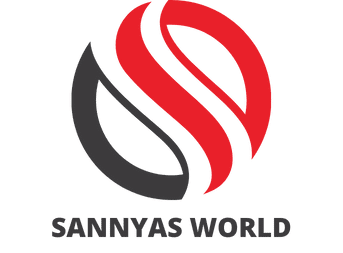What Are the Tax Implications for Converting Commercial Properties to Residential Use in the UK?

In today’s ever-evolving real estate market, the conversion of commercial properties to residential use is an increasingly popular strategy for developers and investors. However, one cannot overlook the tax implications that stem from such conversions. Understanding the value-added tax (VAT), the planning stage, and the exemptions available are crucial when dealing with property conversions in the United Kingdom.
VAT and Property Conversions
Value-added tax, commonly known as VAT, is a significant element to consider in the conversion of commercial properties into residential dwellings. Understanding how it works across the construction and development process is paramount.
Topic to read : How to Leverage the UK’s Help to Buy Scheme for Real Estate Investment?
VAT, a consumption tax imposed on a product or service’s value at each stage of production, is typically levied at the standard rate of 20% in the UK. However, the VAT treatment of property transactions can vary. For instance, certain types of property work may be charged at a reduced rate of 5% or even be entirely exempt from VAT.
A notable example is the conversion of a commercial property into a residential unit. This is classified as a ‘reduced-rated’ service. The reduced rate of 5% applies to the renovation or alteration of vacant residential properties, including the conversion of a non-residential property into a dwelling. Should the building have been vacant for over two years, the renovation or alteration service will be reduced-rated.
Also to read : How to Utilize Advanced Drones for Real-Time Construction Monitoring in Real Estate Development?
However, it’s essential to remember not all work qualifies for this reduced rate. Certain services, such as the installation of goods, are standard-rated at 20%. Therefore, it’s vital to seek professional advice to ensure you correctly identify any VAT liabilities and potential savings.
Tax Implications in the Planning Stage
Transitioning from the VAT realm, another pressing concern for developers is the tax implications during the planning phase. This is where the negotiation of Section 106 agreements and Community Infrastructure Levy (CIL) comes into play.
‘Section 106 agreements’ are obligations attached to a planning permission to mitigate the impact of development on the local area. Typically, they require developers to provide affordable housing or other contributions. In contrast, the CIL is a charge that local authorities can impose on new developments to help fund infrastructure. These charges are usually high and can significantly impact the financial viability of a project.
However, it’s possible to reduce these costs by negotiating with the local planning authority. For example, if a developer can demonstrate that the CIL charge makes the development unviable, they may be able to negotiate a lower rate. Additionally, there can be a relief for social housing and charitable developments which may lessen these costs.
Exemptions and Reliefs in Property Conversion
When dealing with commercial-to-residential property conversions, there are also certain exemptions and reliefs to consider. These can potentially make the project more financially viable.
In terms of VAT, if a property has been empty for ten years or more, it may be eligible for a zero-rate VAT on conversion works. This means that you’d pay no VAT on any qualifying renovation or alteration services.
There’s also the ‘sale as a going concern’ exemption. If you’re selling a property as a ‘going concern’ (for example, a functioning business or rental property), that sale may be exempt from VAT. However, there are specific conditions around what qualifies as a ‘going concern’, so professional advice is recommended.
Impact of Stamp Duty Land Tax (SDLT)
Stamp Duty Land Tax is another crucial tax to consider when converting commercial properties into residential ones. This tax applies to purchases of property and land in England and Northern Ireland.
The rate of SDLT depends on the property’s type, its price, and whether it’s residential or non-residential. Commercial property has different SDLT rates and thresholds compared to residential ones. Generally, the SDLT rate is lower for commercial properties.
However, when converting a commercial property to residential, the property will be reclassified, and the higher residential SDLT rates will apply. This can significantly increase the overall cost of the project, so it needs to be factored into the financial planning.
Importance of Professional Advice
Throughout the process of converting commercial properties into residential dwellings, navigating the intricate tax landscape will require the assistance of professionals well-versed in property tax laws. The complexities of VAT, planning obligations, exemptions, and reliefs can seem daunting, but with the right advice, these can be successfully managed.
For instance, engaging a tax consultant during the planning stage can help one identify potential savings, understand the implications of Section 106 agreements and CIL, and how to negotiate these. Similarly, an experienced property lawyer can provide invaluable advice on the legal aspects of the conversion process.
Remember, every property conversion project is unique. The tax implications will vary depending on factors such as the type of property, its location, the intended use of the residential units, and more. That’s why it’s crucial to seek bespoke professional advice tailored to your specific circumstances.
Permitted Development Rights and Tax Implications
When considering the conversion of commercial properties into residential use in the UK, the subject of Permitted Development Rights (PDRs) is of significance. PDRs are a form of planning permission that allow certain building works and changes of use to be carried out without having to make a full planning application.
In 2020, the UK Government expanded PDRs to include the conversion of a wider range of commercial properties to residential use. This policy was designed to stimulate housing supply and regenerate high streets. However, the tax implications associated with PDRs can be intricate and need to be thoroughly understood.
For example, if a commercial property is converted into residential property under PDRs, it’s considered a ‘change of use’. This is important because a ‘change of use’ can have tax implications, particularly in regards to standard-rated VAT. While most property transactions are exempt from VAT, a ‘change of use’ may be subject to the standard-rated VAT of 20%.
Moreover, where the option to tax has been exercised on a property, this can complicate matters. The option to tax allows a property owner to charge VAT on rents and sales. However, if a property is converted under PDRs, this could potentially disapply the option to tax, making the sale or lease of the converted property exempt from VAT.
Therefore, it’s necessary to understand the interplay between the option to tax, PDRs, and VAT, and it’s highly recommended to engage a tax consultant or solicitor to navigate these complexities.
Long Lease Tax Implications and the ‘Going Concern’ Exemption
When the conversion of a commercial property to residential involves the granting of a long lease, it’s essential to understand the tax implications. A long lease, generally defined as a lease over 21 years, may be subject to different tax rules compared to shorter leases.
Under the standard-rated VAT rules, a long lease may be treated as a supply of goods, rather than a supply of services, and VAT could be chargeable on the lease. This can increase the overall cost of the project.
However, the ‘sale of a going concern‘ exemption might be applicable in certain circumstances. If a long lease on a converted property is granted alongside other assets that constitute a business, the lease may qualify as a sale of a ‘going concern’, which could be exempt from VAT. This exemption could potentially offer substantial tax savings.
However, the rules around what constitutes a ‘going concern’ are complex and require careful consideration and professional advice. It’s essential to consider this aspect carefully and seek expert guidance to avoid potential pitfalls and maximise potential savings.
In Conclusion: Navigating UK Tax Considerations in Commercial-to-Residential Conversions
Understanding the tax implications when converting commercial properties to residential use in the UK is a multifaceted process, one that requires careful consideration and expert guidance. The tax landscape can be complex, involving aspects such as standard-rated and reduced-rate VAT, planning obligations, permitted development rights, and potential exemptions and reliefs.
Emphasising the importance of obtaining professional advice cannot be overstated. A tax consultant can help identify potential savings and understand the intricacies of the VAT system, the implications of planning permissions, and successfully negotiate these elements. Also, a property lawyer can provide invaluable advice on the legal aspects of the conversion process.
In conclusion, while the process of converting commercial property to residential use in the UK can be an attractive investment, it is important to have a clear understanding of the tax implications, intricacies and potential stumbling blocks. With careful planning and the help of professionals, it is possible to navigate this complex landscape successfully.
